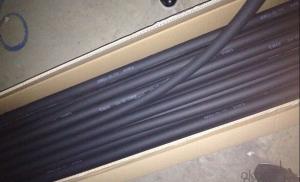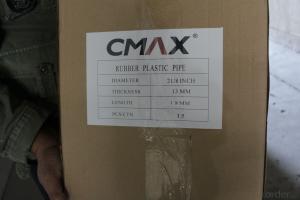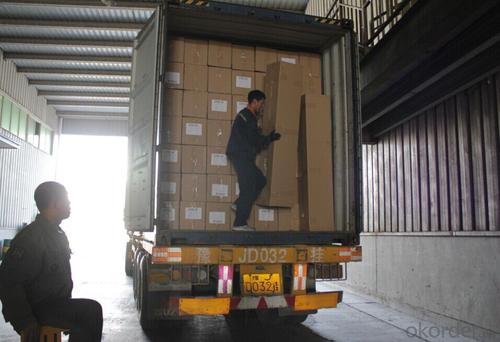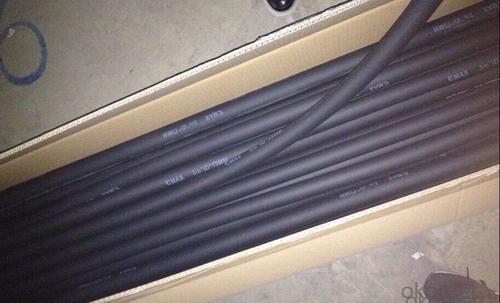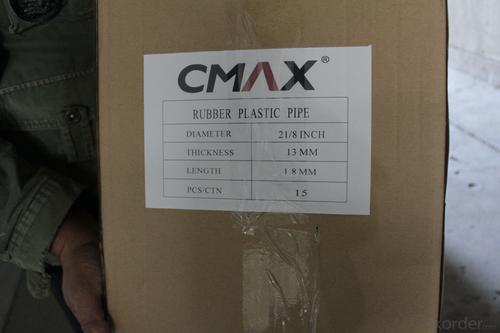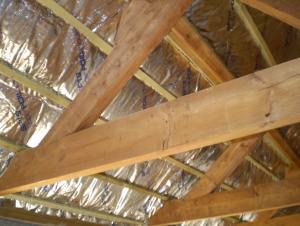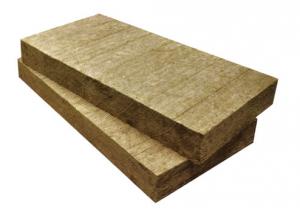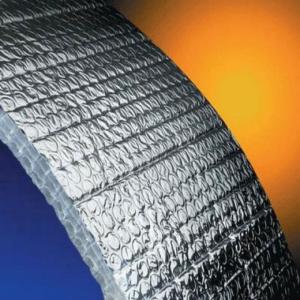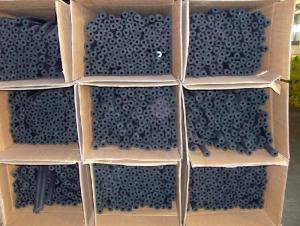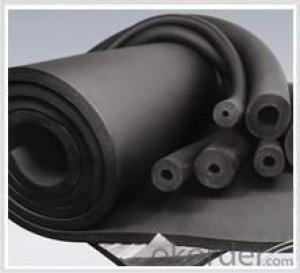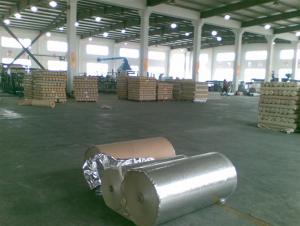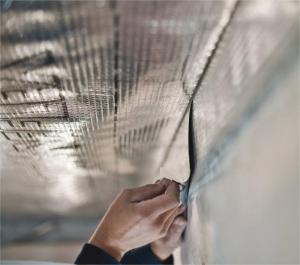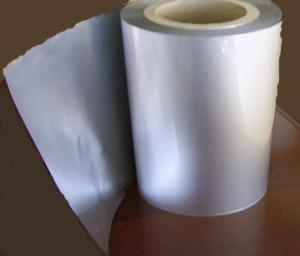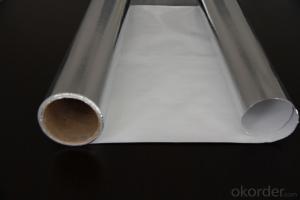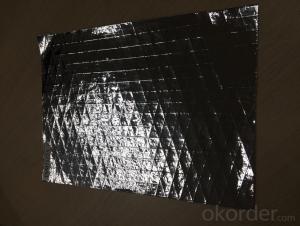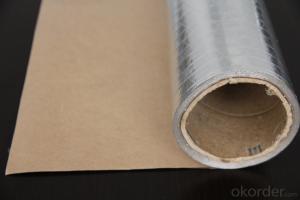Aluminum Foil Facing Rubber Insulation Board
- Loading Port:
- China Main Port
- Payment Terms:
- TT OR LC
- Min Order Qty:
- -
- Supply Capability:
- -
OKorder Service Pledge
Quality Product, Order Online Tracking, Timely Delivery
OKorder Financial Service
Credit Rating, Credit Services, Credit Purchasing
You Might Also Like
CMAX Rubber Plastic Product advantages:
Fire-blocking, Low Conductivity factor, Good pliability, Closed pore foaming, Good damp-proof property, Vibration resistance, Easy to install and beautiful appearance
| Item | Unit | Specification | Standard | |
| Density | Kg/m³ | ≤95 | GB/T6343 | |
| Oxygen index | % | ≥32 | GB/T2406 | |
| Flammability | SDR | —— | ≤75 | GB/T8627 |
| Conductivity factor | W/(m.k) | |||
| Average temperature | ||||
| -20°C | ≤0.031 | GB/T10294 | ||
| 0°C | ≤0.034 | |||
| 40°C | ≤0.036 | |||
| Watervapor permeability | Coefficient | g/(m.s.pa) | ≤2.8*10-11 | GB/T17146-1997 |
| Factor | —— | ≥7.0*10³ | ||
| Water absorption ratio in vacuum | % | ≤10 | GB/T17794-2008 | |
| Dimension stability | % | ≤10 | GB/T8811 | |
| 105±3°C,7d | ||||
| Crack resistance | N/cm | ≥2.5 | GB/T10808 | |
| Compression resilience ratio | % | ≥70 | GB/T6669-2001 | |
| Compression time 72h | ||||
| Anti-ozone | —— | Not cracking | GB/T7762 | |
| Ozone pressure 202mpa | ||||
| 200h | ||||
| Aging resistance | —— | Slightly crumpling, | GB/T16259 | |
| 150h | no cracks, | |||
| Temperature | °C | -40°C——110°C | GB/T17794 | |
- Q: What are the distinctions among various food wraps found in stores?
- <p>Yes, there are differences among food wraps available on the market. They vary in material, such as plastic, aluminum foil, parchment paper, and beeswax wraps. Each type has distinct properties: plastic cling wrap is versatile but not microwave-safe; aluminum foil conducts heat well and is reusable but can tear easily; parchment paper is ideal for baking and can withstand high temperatures; and beeswax wraps are eco-friendly, reusable, and can be used in the fridge or freezer but not for high-heat cooking. Each type also differs in terms of environmental impact, cost, and suitability for different food storage and cooking needs.</p>
- Q: What distinguishes aluminum foil facing from other types of facing materials?
- <p>Aluminum foil facing is a type of facing material that uses a thin layer of aluminum, known for its excellent barrier properties against air, moisture, and light. This makes it ideal for insulation and packaging applications where preservation of contents is crucial. In contrast, other types of facings, such as paper, fabric, or plastic, may not offer the same level of barrier protection. Paper facings are often used for their aesthetic appeal and are more breathable, while fabric facings provide flexibility and are used for applications requiring durability and comfort. Plastic facings can be waterproof and are used where a shiny or smooth surface is desired. Each type of facing has unique properties that make it suitable for specific applications, with aluminum foil facing being particularly notable for its barrier capabilities.</p>
- Q: Is it safe to use aluminum foil facing to wrap food for cooking methods like roasting or grilling?
- <p>Yes, you can use aluminum foil facing to wrap food before roasting or grilling. Aluminum foil is a common and safe material used in cooking, especially for wrapping foods to retain moisture and flavor. It's important to ensure the foil is food-grade and not damaged, as this can affect the food's safety and taste. When using foil, make sure it's sealed properly to prevent juices from leaking and to keep the food moist. Avoid direct contact with the heat source as much as possible to prevent the foil from burning and potentially releasing any harmful substances into the food.</p>
- Q: What are the advantages of using recycled aluminum foil for cooking and food storage?
- <p>Using recycled aluminum foil in cooking and food storage offers several benefits. It is environmentally friendly as it reduces waste and conserves resources. Recycled foil retains the same properties as non-recycled foil, providing excellent heat conduction and insulation, which is crucial for even cooking and maintaining food temperature. It is also cost-effective as it is generally cheaper than non-recycled foil. Moreover, it is versatile, suitable for a wide range of applications from baking to wrapping food for storage. However, it's important to ensure that the recycled foil is food-grade and meets safety standards to avoid any health risks.</p>
- Q: This question asks for methods to clean aluminum foil that has excess oil on it after cooking or food storage.
- <p>To remove excess oil from aluminum foil facing after cooking or food storage, you can follow these steps: 1. Allow the foil to cool down to avoid burns. 2. Use a paper towel to blot and absorb the excess oil. 3. For stubborn oil, you can wipe the foil with a damp cloth or sponge with a mild dish soap. 4. Rinse the foil thoroughly with warm water to remove any soap residue. 5. Dry the foil with a clean towel or let it air dry. If the oil is extremely stubborn, consider using a gentle scrubber or baking soda paste to help remove it. Always check the foil for any damage or wear before reusing it.</p>
- Q: What are the eco-friendly alternatives to traditional plastic food wraps?
- <p>Yes, there are several environmentally friendly alternatives to traditional plastic food wraps. These include beeswax wraps, which are reusable and made from natural materials like cotton, beeswax, and jojoba oil. Another option is silicone food wraps, which are durable, reusable, and can withstand high temperatures. Additionally, there are compostable wraps made from plant-based materials like cornstarch and cellulose, which break down naturally in compost. Using reusable containers or aluminum foil can also reduce the need for single-use wraps. These alternatives help reduce plastic waste and are more sustainable for the environment.</p>
- Q: How should aluminum foil be stored after it has been used for cooking or food storage to keep it clean and ready for future use?
- <p>The best ways to store aluminum foil facing after using it for cooking or food storage involve cleaning and organizing it properly. First, wash the used foil with warm soapy water to remove any food residue. Rinse it thoroughly and pat dry with a clean towel. To store, roll the foil tightly starting from the center, keeping it compact and neat. Alternatively, you can store it in a resealable plastic bag or a dedicated foil container to keep it clean and prevent it from tearing. Always store it in a cool, dry place away from direct sunlight to maintain its quality.</p>
- Q: Is it safe or practical to use aluminum foil as a facing material for cooking purposes?
- <p>Yes, aluminum foil facing can be used for cooking, but with caution. It's often used to line baking sheets, cover dishes for steaming, or wrap foods for roasting. However, it's not recommended for direct contact with acidic or salty foods as it can react and leach aluminum into the food. Also, avoid using it at high temperatures as it can melt and release harmful fumes. Always follow the manufacturer's guidelines for safe use.</p>
- Q: Explain the distinct characteristics of aluminum foil facing compared to other metal facings.
- <p>Aluminum foil facing is a type of metal facing material that is made from thin sheets of aluminum, known for its light weight, high reflectivity, and excellent heat resistance. It is commonly used in construction for insulation and moisture protection. In contrast, other types of metal facings, such as steel or copper, may offer different properties. Steel facings are often stronger and more durable but can be heavier and less resistant to corrosion without protective coatings. Copper facings are known for their natural resistance to corrosion and can be used in applications requiring antimicrobial properties or high thermal and electrical conductivity. Each type of metal facing has its unique advantages and is chosen based on specific application needs.</p>
- Q: Explain the differences between thin and thick aluminum foil facing in terms of thickness, durability, and usage.
- <p>Thin aluminum foil facing is characterized by its low thickness, which makes it flexible and easy to handle but less durable. It's commonly used for wrapping food, baking, and protecting surfaces. Thick aluminum foil facing, on the other hand, is more robust and tear-resistant, suitable for heavy-duty applications such as construction, insulation, and packaging. The thicker material offers better protection and durability, but it's less pliable and can be more challenging to work with.</p>
Send your message to us
Aluminum Foil Facing Rubber Insulation Board
- Loading Port:
- China Main Port
- Payment Terms:
- TT OR LC
- Min Order Qty:
- -
- Supply Capability:
- -
OKorder Service Pledge
Quality Product, Order Online Tracking, Timely Delivery
OKorder Financial Service
Credit Rating, Credit Services, Credit Purchasing
Similar products
Hot products
Hot Searches
Related keywords

